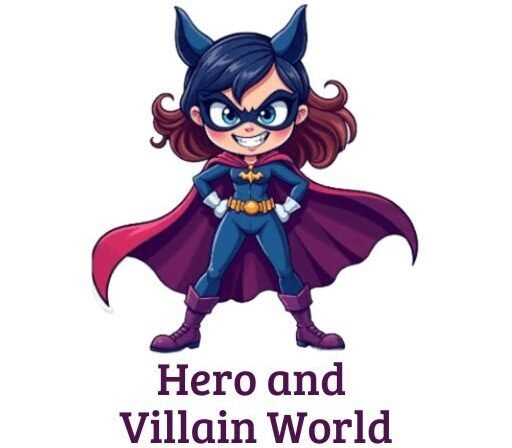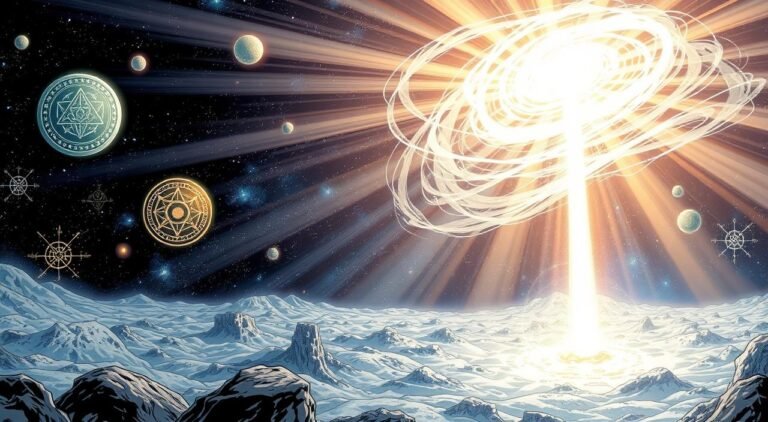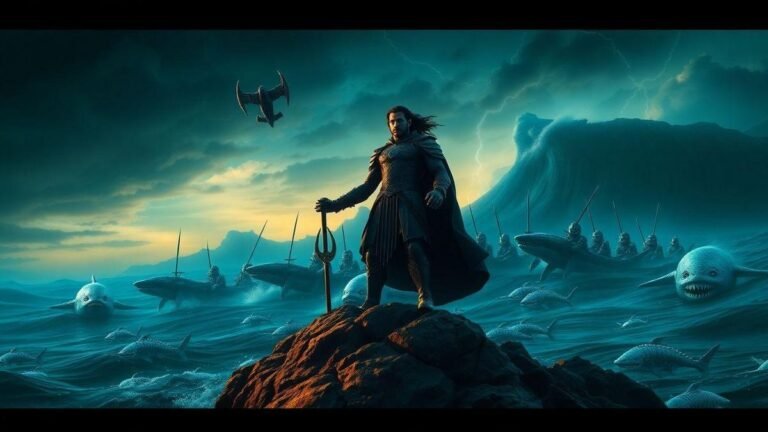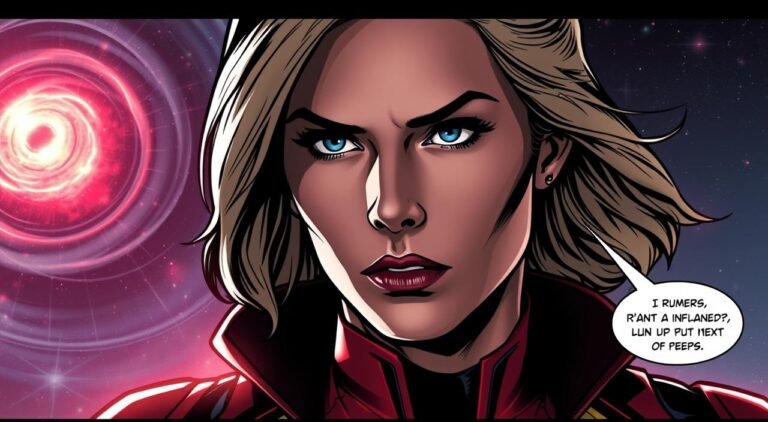An Old God Returns To Challenge Thor
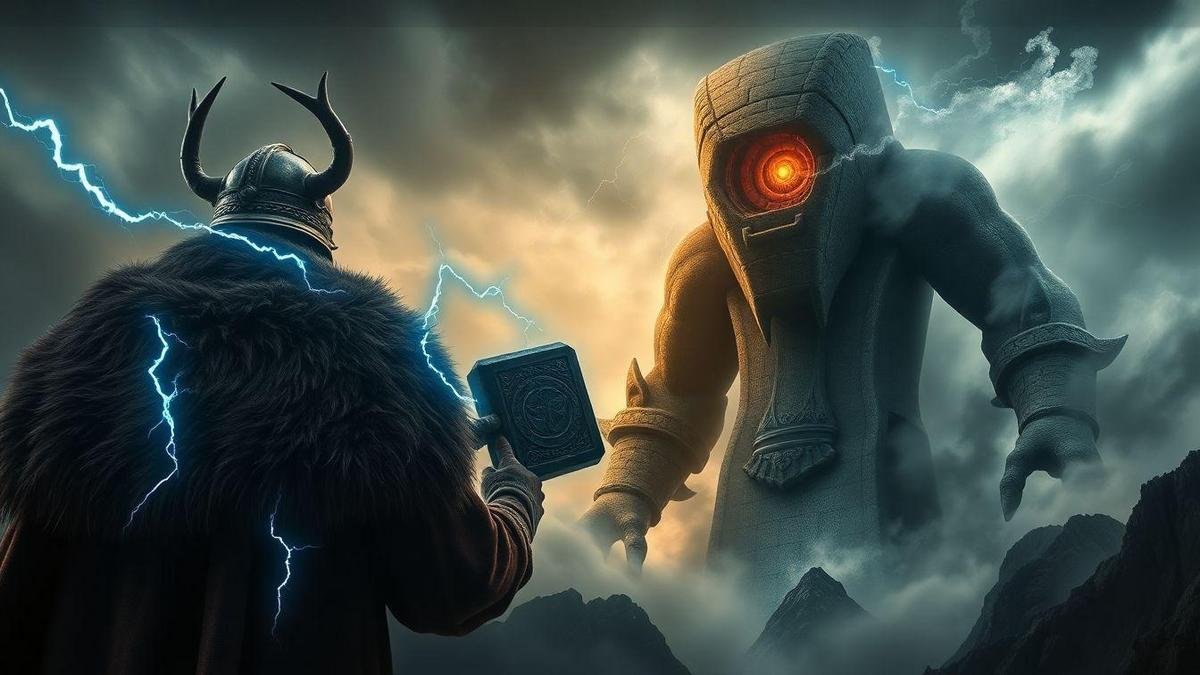
You get a friendly roadmap to the comics and films where ancient Norse gods come back to face Thor. Quick looks at the classic Stan Lee & Jack Kirby runs, the mythic sweep of Walt Simonson, and the modern fury of Jason Aaron.
A short reading list shows Asgard fighting primeval deities. Learn how Marvel twists Norse myth, what Ragnarok and key myth figures mean, how movies borrow comic beats, and simple tips to spot the old god plot and where to read and watch the stories of An Old God Returns To Challenge Thor.
Key Takeaway
- An ancient god returns to test Thor.
- The hero is pushed to his limits.
- The world can be at risk.
- Allies and choices shape the fight.
- Brace for an epic showdown.
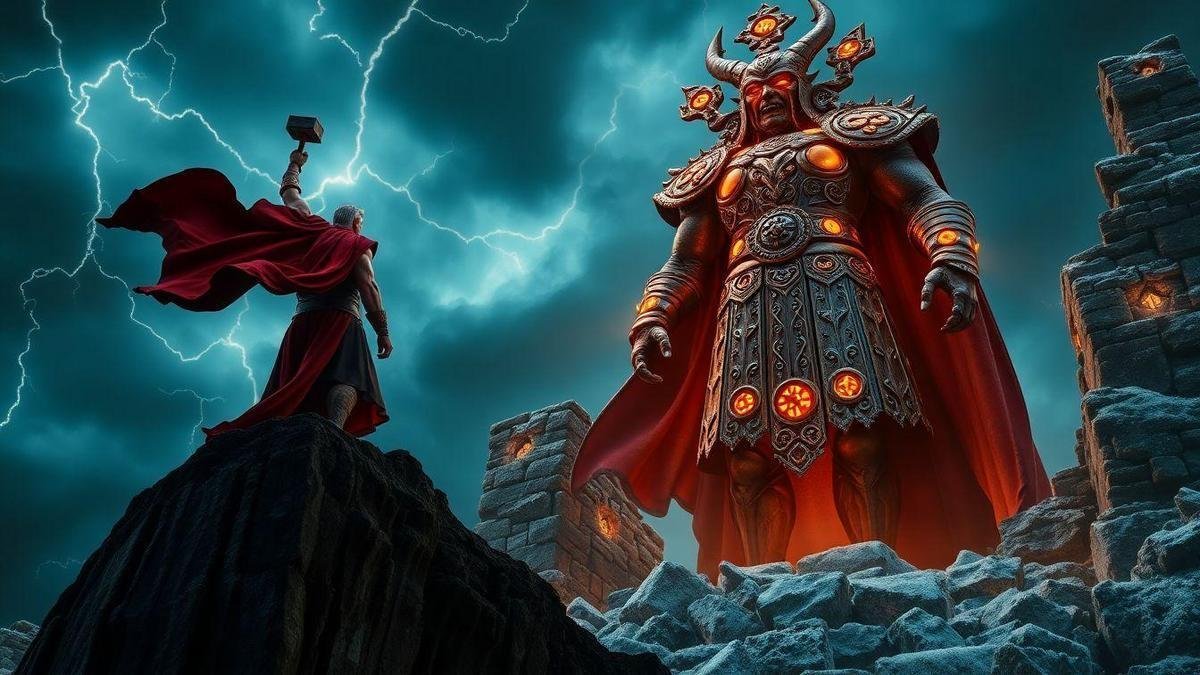
Notable Marvel comics where an ancient Norse god returns to challenge Thor
Where to start: classic Thor (Stan Lee & Jack Kirby)
Start with Journey into Mystery #83 (1962) — Thor’s first appearance. Read the early Journey into Mystery run to meet Odin, Loki’s betrayals, and many Asgardian threats.
These stories set the tone for later clashes where An Old God Returns To Challenge Thor. For canonical appearances and a publisher overview, see the Official Marvel character page for Thor which summarizes key runs and appearances.
What to read | Why it matters | Where to find it
Journey into Mystery #83 | Thor’s origin and early Asgardian fights | Single issue or digital
Marvel Masterworks: The Mighty Thor Vol. 1 | Collected early Lee & Kirby stories | Trade paperback or omnibus
Early Journey into Mystery → The Mighty Thor | Shows recurring ancient-god threats | Back-issue bins / libraries / digital
Modern runs that revisit Thor vs. ancient-god themes (Walt Simonson & Jason Aaron)
Walt Simonson turned Thor into a mythic epic — read his trades for battles with Surtur and other primeval foes. For context on Ragnarok, see discussions of Asgard’s destruction and rebirth in the Ragnarok & Asgard coverage — Simonson leans into that fire-and-sword feel.
Jason Aaron pushes Thor darker. The God Butcher (Gorr) hunts gods across time; War of the Realms gathers many old powers for all-out war — the aftermath and scope are explored in the War of the Realms aftermath.
Aaron delivers emotional weight and blockbuster set pieces — modern takes on An Old God Returns To Challenge Thor. Crossovers like Siege also show how Asgardic storylines scale up into larger Marvel events.
Creator | Key themes | Recommended collection
Walt Simonson | Mythic battles, Surtur, epic scale | Thor by Walt Simonson (trade/omnibus)
Jason Aaron | Gorr the God Butcher, large crossovers | Thor: God of Thunder / War of the Realms (trades)
Short comic reading list to see Asgardian vs. ancient deity scenes
- Journey into Mystery #83 — start here for classic god clashes.
- Marvel Masterworks: The Mighty Thor Vol. 1 — Lee & Kirby arcs.
- Thor by Walt Simonson (collection) — mythic fights, Surtur scenes.
- Thor: God of Thunder — The God Butcher (Jason Aaron) — gods hunted across time.
- War of the Realms (Jason Aaron) — mass battles with ancient powers.
Grab single issues, trades, or digital editions; a trade reads like a thunderstorm in one sitting.
How Norse mythology and Marvel differ when an ancient god challenges Thor
What to know about Ragnarok, comebacks, and key myth figures
In Norse sources, Ragnarok is a final, world-shaking battle where many gods die and the world is remade. Important figures:
- Odin — the chief god, faces Fenrir.
- Thor — fights Jörmungandr (the Midgard Serpent) and dies after killing it.
- Loki — trickster who sides with forces of ruin.
- Fenrir — giant wolf who kills Odin.
- Surtur / Surtr — fire giant who brings destruction.
For a concise reference, see the Overview of Ragnarök in Norse myth. In myth, returns are tied to fate and cosmic cycles. Marvel treats returns as plot devices: resurrection, alternate timelines, or magical comebacks — a pattern often explored in pieces about long-form comics and foreshadowing.
Use this phrase to frame comparisons: An Old God Returns To Challenge Thor — in myth the return often means a new age, not a simple cliff-hanger.
How Marvel adapts myths into comic storylines
Marvel reshapes myth for ongoing drama. Look for these patterns:
- Asgard is a revisitable realm across many issues.
- Villains return regularly, keeping stories moving — many are cataloged among iconic Marvel villains.
- Characters feel human — they argue, change sides, and survive when myths said they’d die.
- Marvel adds original foes that feel mythic but support long runs.
Topic | Norse Myth | Marvel Comics
Ragnarok is final and cyclical | Battles reset; heroes return
Death of gods | Many die permanently | Many die but are later revived
Character tone | Stiff, poetic, symbolic | Emotional, varied, character-driven
Villain comeback | Rare; tied to fate | Frequent for plot momentum
Story purpose | Explain nature and fate | Entertain and expand series
Key myth-vs-comic points:
- Cause of conflict: myth follows prophecy; comics follow villains or story needs.
- Scale: myth is timeless and cosmic; comics turn that into readable action.
- Consequences: myth leaves rebirth; comics give consequence but often reset.
- Return mechanics: mythic returns mean rebirth; comics use resurrection, timelines, or magic.
Think of myth as deep weather and comics as weather forecasts — both discuss storms, but one explains why they exist and the other tells you when they’ll hit your town.
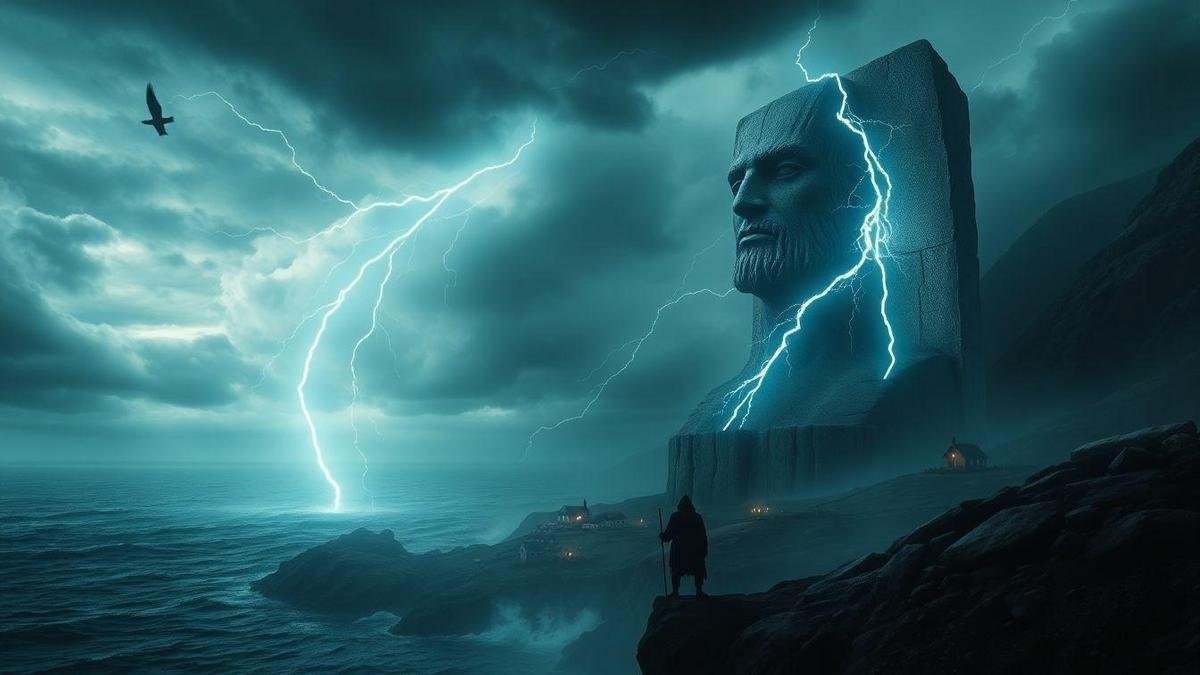
How movies handle “An Old God Returns To Challenge Thor” (the old-god plot on screen)
When you watch a screen version of An Old God Returns To Challenge Thor, filmmakers make clear choices: they condense long comic arcs into visual beats, emphasize big set pieces, and follow a single emotional thread. For film-specific context and release details, see the BFI entry on Thor: Analysis and details for Thor film.
- Movies compress myth-building into short scenes, using music, lighting, and close-ups to sell ancient power.
- Films often blend comic ideas: characters, motives, or artifacts may be combined. The core remains: Thor facing a deep, returning force — but the path is cleaner and more cinematic.
How film versions borrow comic ideas for old-god invasions
Tips to compare film beats with the comics and books
- Read the comic arc and note main beats: origin, rise, clash, fallout.
- Watch the movie and list the same beats; mark what’s missing.
- Look for motifs: repeated images, lines, or objects from the comics.
- Compare characters: who gains screen time, who vanishes, who becomes a composite.
- Check pacing: comics breathe; movies speed up and cut subplots.
- Note tone: comics can be darker and more complex; films aim for clearer emotional hooks.
If you’re tracking how adaptations compress suspense and reveals, the site’s piece on comic cliffhangers is a good reference for the kinds of payoffs filmmakers may simplify or preserve.
Where to watch and read to spot the return of an old god (Thor themes)
- Streaming: Check Disney for Thor films and MCU entries. Rentals on Apple TV or Prime Video when not on a service.
- Digital comics: Marvel Unlimited and Comixology let you search Thor runs and mythic arcs.
- Print: Local comic shops and libraries carry trades and collected runs by Simonson or Aaron.
- Reviews & guides: Look for reading orders online to find the issues focused on god themes — many roundups and aftermath guides cover these events in context, like the site’s coverage of War of the Realms aftermath or event retrospectives. The Library of Congress guide to comics and graphic novels is also a solid starting point for locating print and archival issues: Library of Congress comics collection guide.
Why “An Old God Returns To Challenge Thor” resonates
The phrase An Old God Returns To Challenge Thor hits a sweet spot between myth and serialized storytelling:
- It promises cosmic stakes rooted in ancient lore.
- It gives writers a reason to bring back iconic foes or introduce fresh, primal threats.
- It frames Thor as both warrior and mythic figure — a hero whose battles echo legendary cycles but are told in digestible, dramatic arcs.
Fans can enjoy the ritual of revival: rediscovering old threats, seeing them reframed, and watching how Thor adapts.
Conclusion
You now have a clear roadmap to spot when an ancient god comes back to test Thor — whether in Lee & Kirby pages, the mythic sweep of Walt Simonson, or the modern strikes of Jason Aaron (think Gorr and War of the Realms).
Comics give slow-burn prophecy and repeated returns; myths give fate and rebirth; films turn these storms into tight cinematic beats.
Pick a start: Journey into Mystery #83, a Simonson trade, or Jason Aaron’s arcs. Watch the MCU on Disney, read on Marvel Unlimited, or visit local shops. Follow the trail of motifs, folded-in myths, and the techniques writers use to bring An Old God Returns To Challenge Thor to life.
Dive in — read, watch, and compare. Want more deep dives and reading lists? Swing by https://heroandvillainworld.com and lose yourself in the next thunderclap.
Frequently Asked Questions
You get a raw god clash: an old god returns to fight Thor, bringing power, pride, and pain.
The specific name depends on the story — sometimes a known figure like Surtur or Loki, other times an original or mysterious ancient deity revealed as the arc progresses. For examples of betrayals and trickery, see Loki’s betrayals.
Thor fights with thunder, strategy, and allies. The story mixes action with emotional stakes and growth.
It can be any format. The concept appears across comics, collected trades, and film adaptations — check the source for the format.
Search digital stores, Marvel Unlimited, local comic shops, or streaming platforms like Disney. Use reading orders and guides (including event aftermath write-ups such as the War of the Realms aftermath) to find the exact issues or films.
Want primary sources or official references? See the Official Marvel character page for Thor for canonical listings and appearances.
